Cheap Hobbies: Growing Fig Trees
If you’ve never had a fresh fig, then you’ve never really tasted fig. Trying to compare fig newtons to fresh figs is like trying to compare grapes to raisin bran. The processed version has nothing to do with the fresh juicy fruit. They are rarely found in grocery stores because they don’t keep long enough to reach the shelves. The best way to get them is picked straight from a tree. While they don’t grow naturally in freezing climates, so long as you have a nice sunny spot, you can grow them in pots almost anywhere.
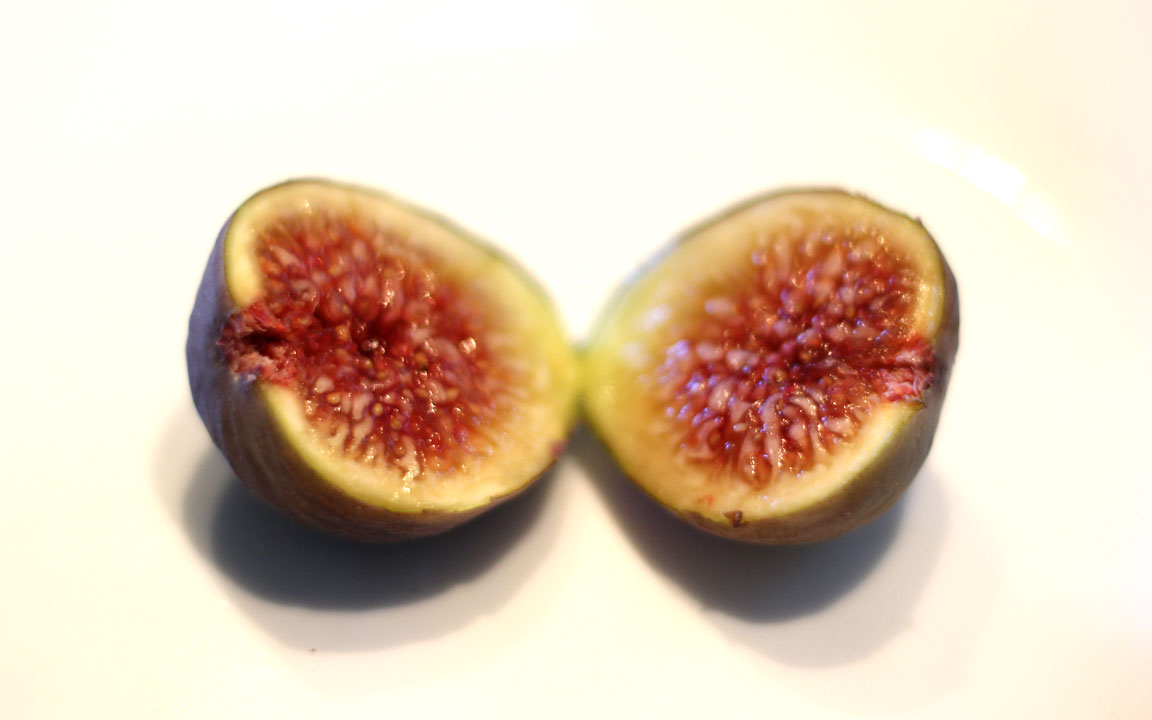 One of our homegrown juicy figs.
One of our homegrown juicy figs.
Growing fig trees in cold climates
When we were in southern France, fig trees were growing wild everywhere. We were lucky enough to be there during the first of two fig fruiting periods. Mrs CK is a fig fanatic, and we spent a lot of our trip gorging on free plump figs picked form the side of the road. While figs grow like weeds in the Mediterranean, we’re not so lucky in the freezing north. But the old timers who love figs have figured out ways to grow them in the cold as well. 
In cold climates, the fig trees need to be protected in the winter time. This can be done by covering the trees with insulation, or simply bringing them inside. Some people even cut the roots on one side so they can lay the tree down and cover it with leaves and tarps for the winter. We keep ours in pots and simply wheel them into our garage for the winter.
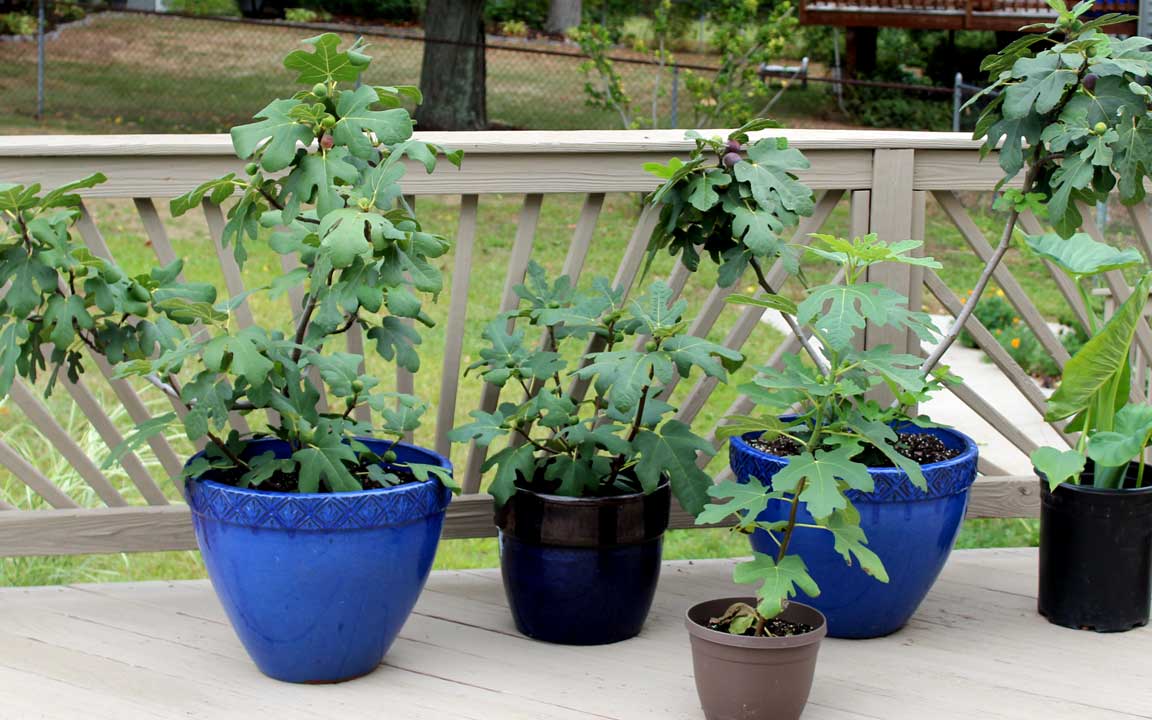 My current collection of fig trees.
My current collection of fig trees.
I grow a fig variety called Chicago Hardy. It’s much more tolerant of cold weather. They’ll survive in an unheated garage or shed as long as they are protected from the wind during winter. Even though they don’t like freezing temperatures, these plants grow very quickly and are easy to propagate.
How to propagate fig trees
I have half a dozen trees now, they all started from a single plant I purchased online (affiliate link.) Once you have a tree, or if you know someone who has one, it’s very easy to grow new plants from cuttings. Literally all you have to do is cut off a branch, stick it in some dirt, and a few weeks later you’ll have a new tree.
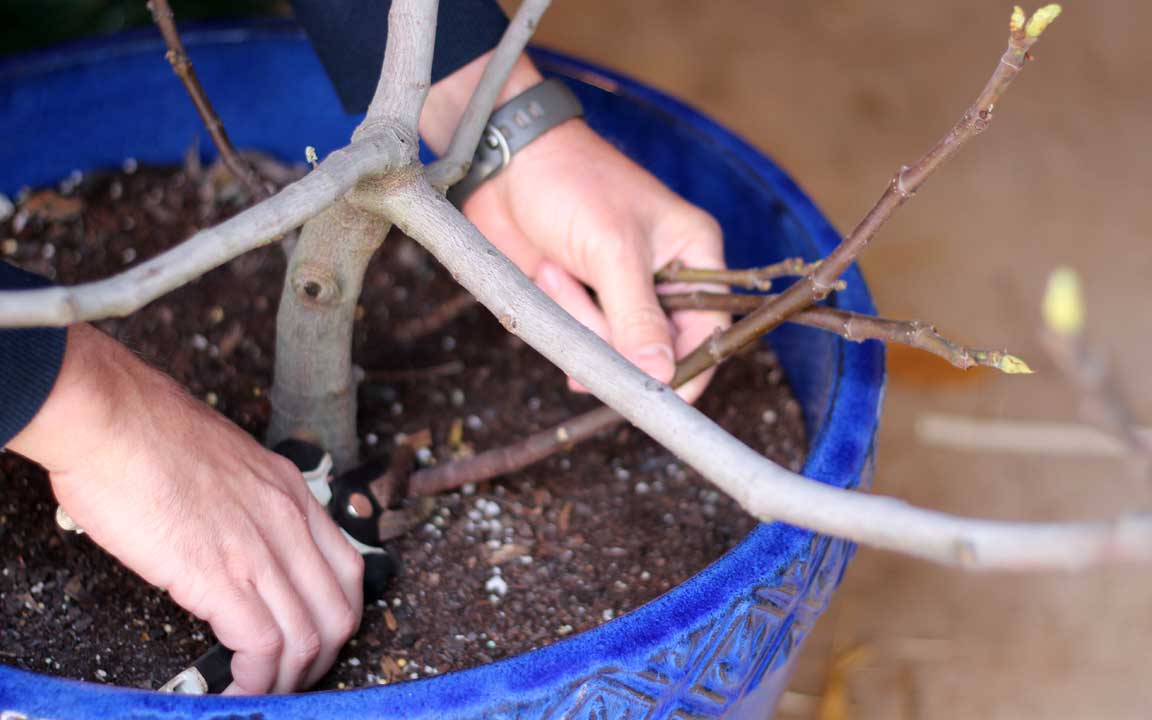 Taking some cuttings from one of my mature trees.
Taking some cuttings from one of my mature trees.
The cuttings needs to be from old growth, meaning a brown branch that established during the last growing season. The best time to make cuttings is in early spring. I usually clean up the shoots that sprang up around the base of my trees during the last summer. You want to make clean cuts, and the end that goes into the dirt should be cut on an angle. You’re shooting for something about 6 inches long. If you have a longer branch, you can make multiple cuttings from it.
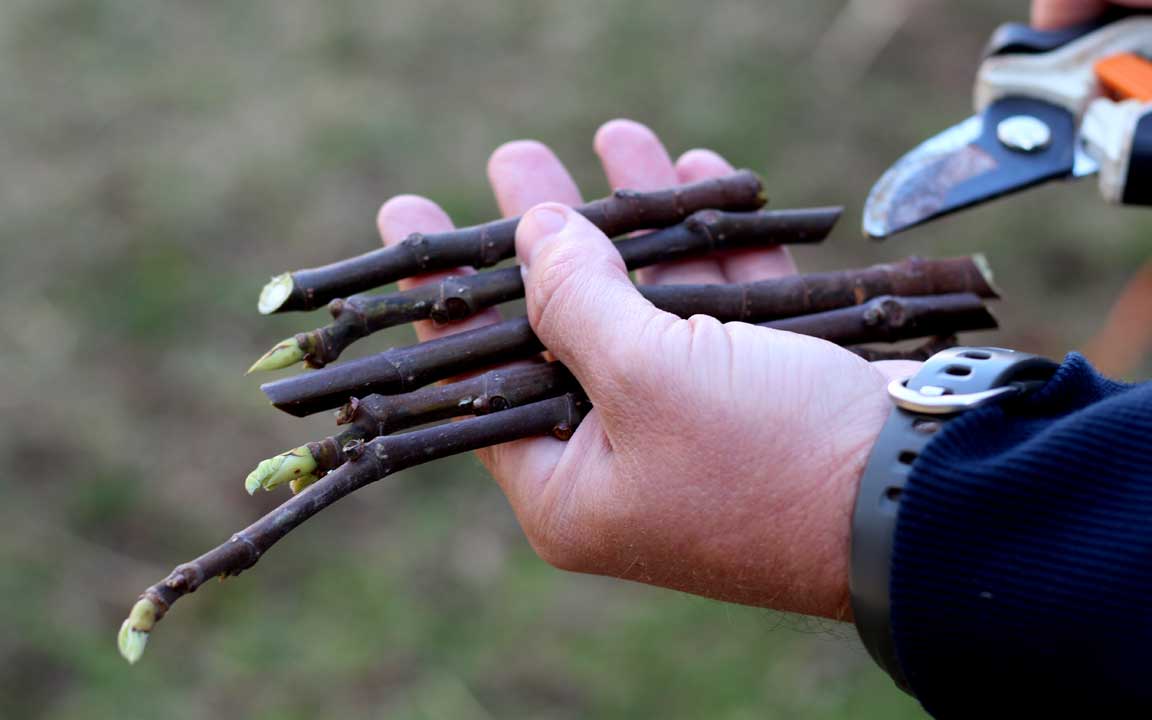 Some fresh cuttings from last year.
Some fresh cuttings from last year.
Last spring I made a bunch of new plants, and ran an accidental experiment. I put half of my cuttings into small plastic containers (old yogurt containers work best), and half of my plants went into peat moss containers. The peat moss containers wick away moisture, and all the cuttings I put in them died. Save your money and pull some plastic containers out of your recycling bin. Just make sure you put a hole in the bottom for water to drain out.
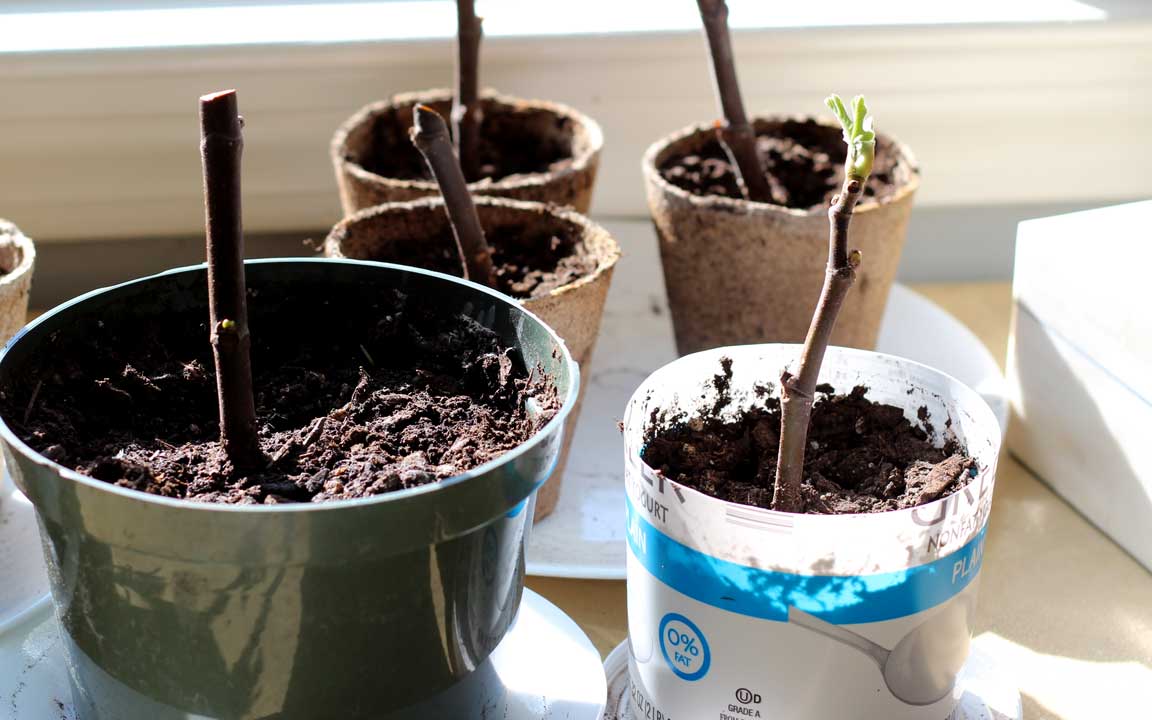 Plant your cuttings and keep them well watered, plastic containers work best.
Plant your cuttings and keep them well watered, plastic containers work best.
Make sure to keep the cuttings well watered in a sunny window. After a few weeks some buds will pop open and sprout leaves. Once the leaves start getting bigger consider moving the tree into a larger pot and giving it more sun. Figs love sun, but if the pot is too small it will dry out quickly and cook the plant. The plant should have at least a gallon size pot before sitting out in full sun all day. Avoid using terracotta and peat moss pots that will wick away moisture.
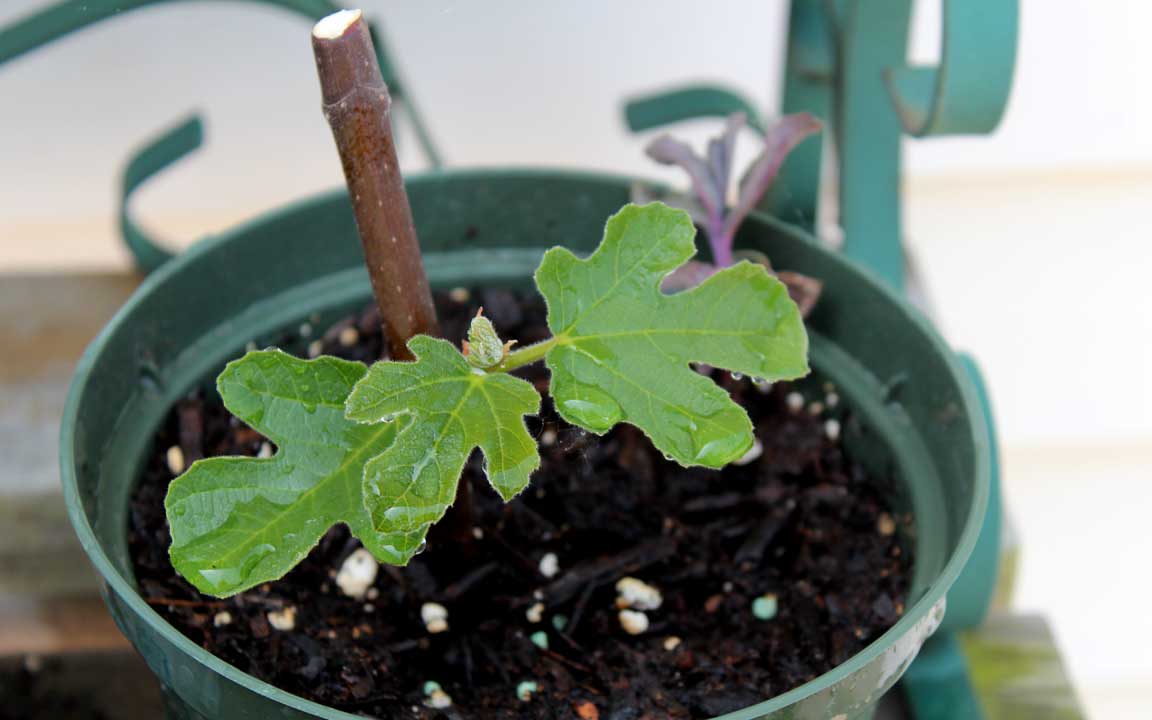 This stick is now a tree.
This stick is now a tree.
Keeping fig trees productive in pots
After growing a new tree, it will start to fruit pretty quickly – usually in the first or second year. Moving plants into larger pots as they grow will help increase production. I only let my trees grow into a certain size pot, and after a few years their roots will fill the pot and start choking the plant. When a plant gets to this point, it will stop producing fruit unless you prune the roots.
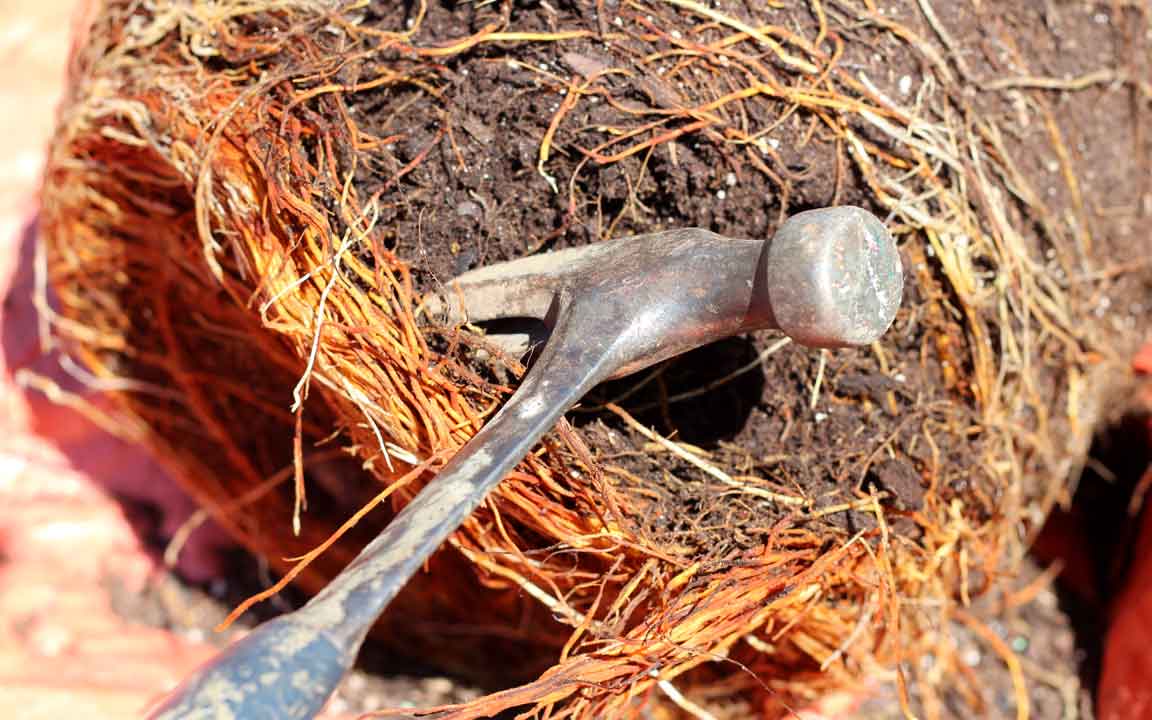 Remove the bound up roots on an older plant.
Remove the bound up roots on an older plant.
Once a tree gets big enough, I start pruning the roots every couple of years. You just pull the plant out, untangle the roots and clip them down. I use the back of a hammer to pull the roots loose for clipping. It might seem drastic, but the trees will take off and produce much more fruit with room for the roots breathe.
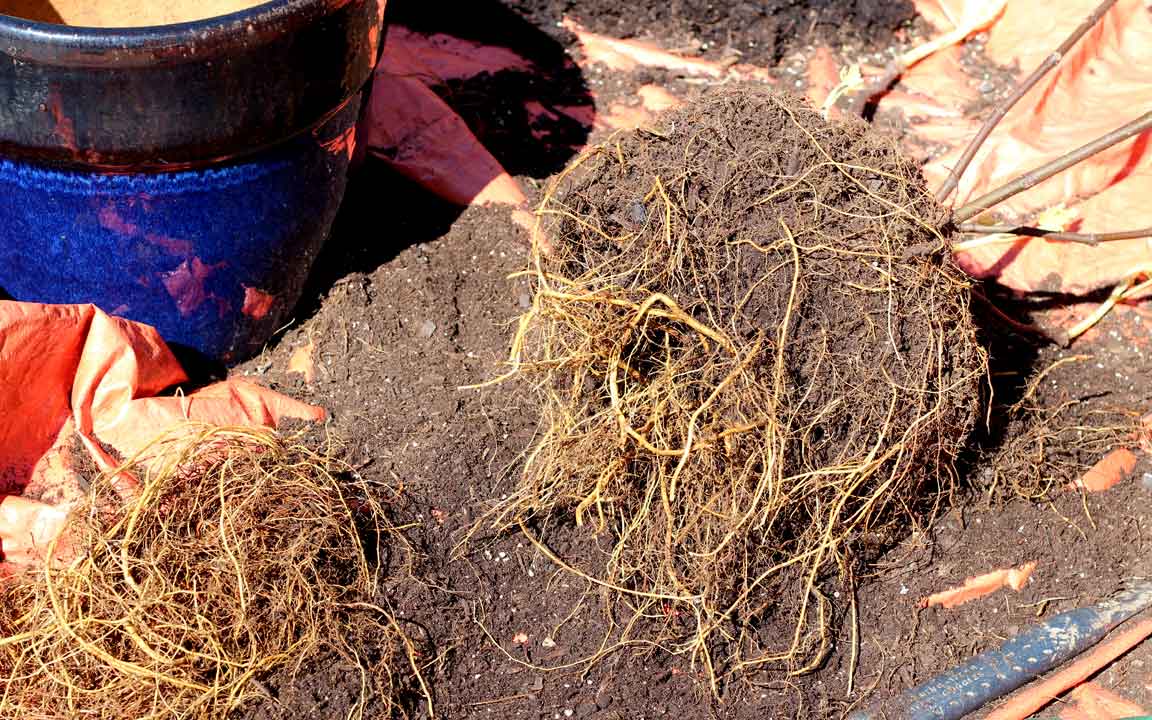 Bound up roots removed, and ready for replanting.
Bound up roots removed, and ready for replanting.
Keep fig trees well fed and watered when fruiting
It’s easy to get excited when the small green fruits start to appear. They will stay medium sized and green for a while. The final ripening happens over a couple of days. Figs will double in size, quickly becoming plump and purple. This final ripening process requires a lot of energy. If they don’t get enough food and water, they will give up on the fruit which will shrivel up and fall off. I always add some basic 10-10-10 fertilizer and water the plants well when they are getting close to ripening.
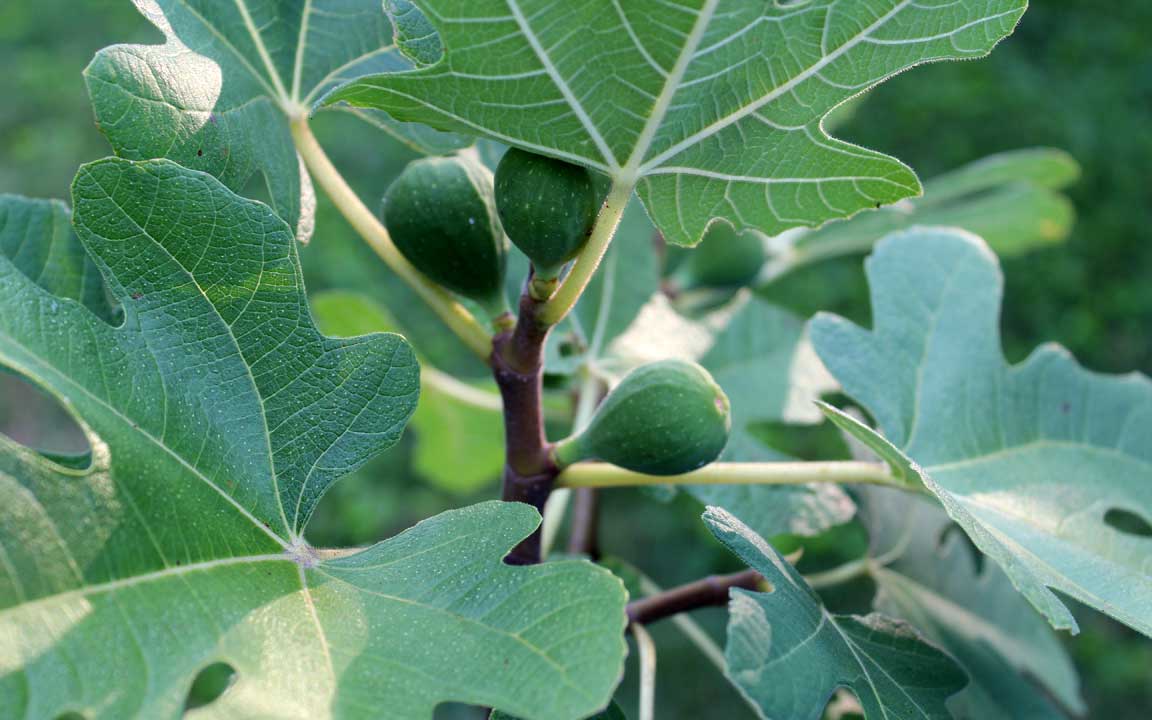 Keep the trees well fed, especially when the fruit is almost ready.
Keep the trees well fed, especially when the fruit is almost ready.
In a few years, you will have more figs than you can handle if you keep up with your plants. Our larger trees put out dozens of plump juicy figs at the end of the summer.
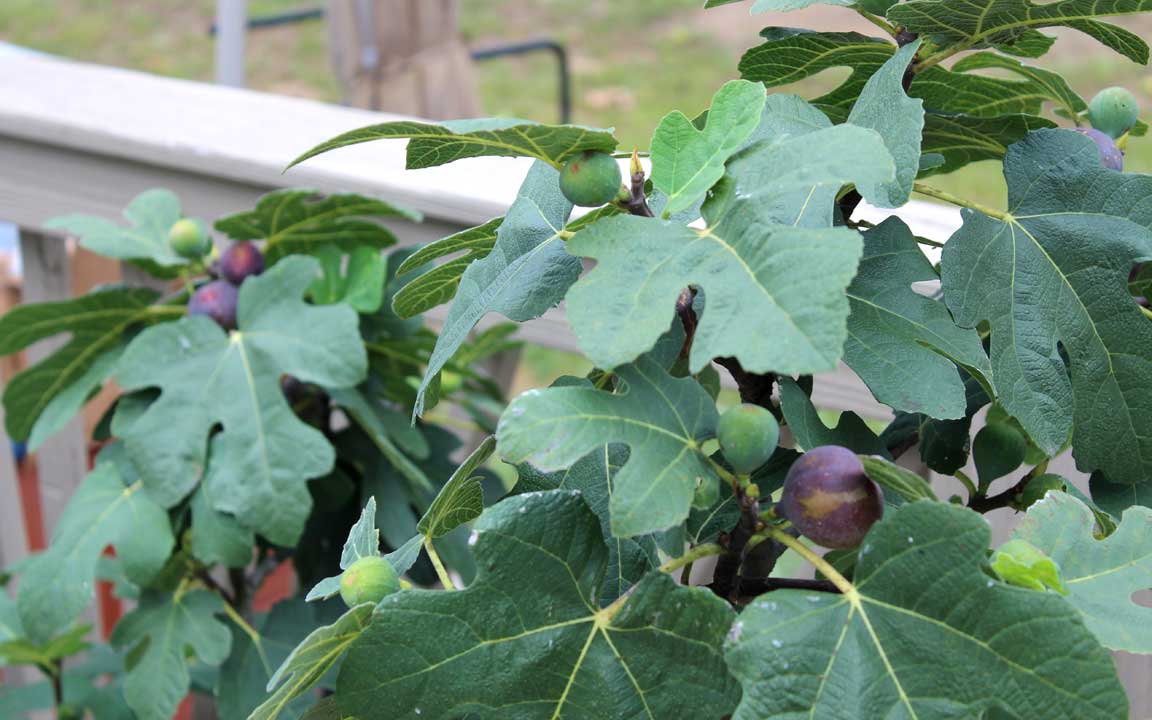 A well kept tree can put out some serious amounts of fruit.
A well kept tree can put out some serious amounts of fruit.
A fun way to grow without a garden
I’m always growing new trees because it’s a fun and free way to create value. I’ve gifted many plants to friends, and I’ve also seen people selling them on Craigslist. They aren’t very easy to come by locally and can be coveted. One of my neighbors was nearly in tears when he lost his tree to a late frost. I was happy to brighten his day with a new one that only cost me some time and potting soil.
After growing figs for a few years now, they are still one of my favorite plants. The trees themselves are beautiful, and double as ornamental plants on our deck. They look great and even give us some extra privacy. It’s also the only way to enjoy this fruit fresh where we live. A starting plant is relatively cheap, they grow fast, and you can produce even more plants once your tree gets bigger. It’s a fun way to get into growing your own food even if you don’t have space for a garden.